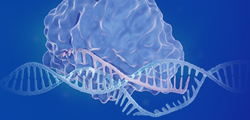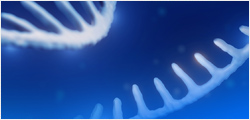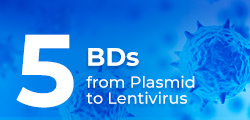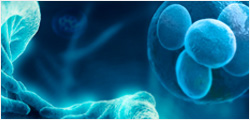| Gene Symbol | CDKN2A |
| Entrez Gene ID | 100271861 |
| Full Name | cyclin dependent kinase inhibitor 2A |
| Synonyms | INK4a,p14ARF,p16,p16INK4A |
| Gene Type | protein-coding |
| Organism | Canis lupus familiaris(dog) |
-
REAGENT SERVICES
Hot!
-
Most Popular Services
-
Molecular Biology
-
Recombinant Antibody/Protein
-
Reagent Antibody
-
CRISPR Gene Editing
-
DNA Mutant Library
-
IVT RNA and LNP Formulations
-
Oligo Synthesis
-
Peptides
-
Cell Engineering
-
- Gene Synthesis FLASH Gene
- GenBrick™ Up to 200kb
- Gene Fragments Up to 3kb now
- Plasmid DNA Preparation Upgraded
- Cloning and Subcloning
- ORF cDNA Clones
- mRNA Plasmid Solutions New!
- Cell free mRNA Template New!
- AAV Plasmid Solutions New!
- Mutagenesis
- GenCircle™ Double-Stranded DNA New!
- GenSmart™ Online Tools
-
-
PRODUCTS
-
Most Popular Reagents
-
 Instruments
Instruments
-
Antibodies
-
ELISA Kits
-
Protein Electrophoresis and Blotting
-
Protein and Antibody Purification
-
Recombinant Proteins
-
Molecular Biology
-
Stable Cell Lines
-
Cell Isolation and Activation
-
 IVD Raw Materials
IVD Raw Materials
-
 Therapy Applications
Therapy Applications
-
Resources
-
- All Instruments
- Automated Protein and Antibody Purification SystemNew!
- Automated Plasmid MaxiprepHot!
- Automated Plasmid/Protein/Antibody Mini-scale Purification
- eBlot™ Protein Transfer System
- eStain™ Protein Staining System
- eZwest™ Lite Automated Western Blotting Device
- CytoSinct™ 1000 Cell Isolation Instrument
-
- Pharmacokinetics and Immunogenicity ELISA Kits
- Viral Titration QC ELISA Kits
- -- Lentivirus Titer p24 ELISA KitHot!
- -- MuLV Titer p30 ELISA KitNew!
- -- AAV2 and AAVX Titer Capsid ELISA Kits
- Residual Detection ELISA Kits
- -- T7 RNA Polymerase ELISA KitNew!
- -- BSA ELISA Kit, 2G
- -- Cas9 ELISA KitHot!
- -- Protein A ELISA KitHot!
- -- His tagged protein detection & purification
- dsRNA ELISA Kit
- Endonuclease ELISA Kit
- COVID-19 Detection cPass™ Technology Kits
-
- Automated Maxi-Plasmid PurificationHot!
- Automated Mini-Plasmid PurificationNew!
- PCR Reagents
- S.marcescens Nuclease Benz-Neburase™
- DNA Assembly GenBuilder™
- Cas9 / Cas12a / Cas13a Nucleases
- Base and Prime Editing Nucleases
- GMP Cas9 Nucleases
- CRISPR sgRNA Synthesis
- HDR Knock-in Template
- CRISPR Gene Editing Kits and Antibodies
-
![AmMag™ Quatro Automated Plasmid Purification]() AmMag™ Quatro automated plasmid purification
AmMag™ Quatro automated plasmid purification
-
![Anti-Camelid VHH]() MonoRab™ Anti-VHH Antibodies
MonoRab™ Anti-VHH Antibodies
-
![ELISA Kits]() ELISA Kits
ELISA Kits
-
![Precast Gels]() SurePAGE™ Precast Gels
SurePAGE™ Precast Gels
-
![Quatro ProAb Automated Protein and Antibody Purification System]() AmMag™ Quatro ProAb Automated Protein and Antibody Purification System
AmMag™ Quatro ProAb Automated Protein and Antibody Purification System
-
![Target Proteins]() Target Proteins
Target Proteins
-
![AmMag™ Quatro Automated Plasmid Purification]() AmMag™ Quatro automated plasmid purification
AmMag™ Quatro automated plasmid purification
-
![Stable Cell Lines]() Stable Cell Lines
Stable Cell Lines
-
![Cell Isolation and Activation]() Cell Isolation and Activation
Cell Isolation and Activation
-
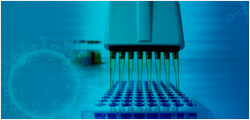 IVD Raw Materials
IVD Raw Materials
-
![Quick
Order]() Quick Order
Quick Order
-
![Quick
Order]() Quick Order
Quick Order
- APPLICATIONS
- RESOURCES
- ABOUT US
- SIGN IN My Account SIGN OUT
- REGISTER
ORF » Species Summary » Canis lupus familiaris » CDKN2A cDNA ORF clone
CDKN2A cDNA ORF clone, Canis lupus familiaris(dog)
-
Gene
-
Clones
gRNAs
-
Summary
-
mRNA and Protein(s)
mRNA Protein Name XM_014117791.1 XP_013973266.1 cyclin-dependent kinase inhibitor 2A -
Pathways from BioSystems

-
Homologies
Macaca mulatta (Rhesus monkey) LOC709988 XP_001098554.1 Danio rerio (zebrafish) LOC100329528 XP_002660514.1 Xenopus tropicalis (tropical clawed frog) cdkn2b NP_001006920.1 Canis lupus familiaris (dog) CDKN2A XP_003431646.2 Pan troglodytes (chimpanzee) CDKN2A NP_001139762.1 Bos taurus (cattle) CDKN2A XP_002689593.3 Mus musculus (house mouse) Cdkn2a NP_001035744.1 Rattus norvegicus (Norway rat) Cdkn2a NP_113738.1 Homo sapiens (human) CDKN2A NP_000068.1 -
Gene Ontology

-
Bibliography
Related articles in PubMed
The MTAP-CDKN2A locus confers susceptibility to a naturally occurring canine cancer.
Shearin AL, Hedan B, Cadieu E, Erich SA, Schmidt EV, Faden DL, Cullen J, Abadie J, Kwon EM, Gröne A, Devauchelle P, Rimbault M, Karyadi DM, Lynch M, Galibert F, Breen M, Rutteman GR, André C, Parker HG, Ostrander EA
Cancer epidemiology, biomarkers & prevention : a publication of the American Association for Cancer Research, cosponsored by the American Society of Preventive Oncology21(7)1019-27(2012 Jul)GeneRIFs: Gene References Into Functions What's a GeneRIF?
The following CDKN2A gene cDNA ORF clone sequences were retrieved from the NCBI Reference Sequence Database (RefSeq). These sequences represent the protein coding region of the CDKN2A cDNA ORF which is encoded by the open reading frame (ORF) sequence. ORF sequences can be delivered in our standard vector, pcDNA3.1+/C-(K)DYK or the vector of your choice as an expression/transfection-ready ORF clone. Not the clone you want? Click here to find your clone.
-
Reference Sequences (Refseq)
CloneID OCe39171 Clone ID Related Accession (Same CDS sequence) XM_014117791.1 Accession Version XM_014117791.1 Latest version! Documents for ORF clone product in default vector Sequence Information ORF Nucleotide Sequence (Length: 456bp)
Protein sequence
SNPVector pcDNA3.1-C-(k)DYK or customized vector  User Manual
User ManualClone information Clone Map  MSDS
MSDSTag on pcDNA3.1+/C-(K)DYK C terminal DYKDDDDK tags ORF Insert Method CloneEZ™ Seamless cloning technology Insert Structure linear Update Date 1504454400000 Organism Canis lupus familiaris(dog) Product cyclin-dependent kinase inhibitor 2A Comment Comment: MODEL REFSEQ: This record is predicted by automated computational analysis. This record is derived from a genomic sequence (NC_006593.3) and transcript sequence (JN086563.1) annotated using gene prediction method: Gnomon, supported by mRNA evidence. Also see: Documentation of NCBI's Annotation Process ##Genome-Annotation-Data-START## Annotation Provider :: NCBI Annotation Status :: Full annotation Annotation Version :: Canis lupus familiaris Annotation Release 105 Annotation Pipeline :: NCBI eukaryotic genome annotation pipeline Annotation Software Version :: 7.4 Annotation Method :: Best-placed RefSeq; Gnomon Features Annotated :: Gene; mRNA; CDS; ncRNA ##Genome-Annotation-Data-END## ##RefSeq-Attributes-START## assembly gap :: added 214 transcript bases to patch genome assembly gap ##RefSeq-Attributes-END##
1
61
121
181
241
301
361
421ATGGAGCCCT TCGCCGACTG GCTGGCCTCG GCGGCAGCCC GGGGCCGCGC GGACGAGGTG
CGGGCGCTGC TCGCGGCGGG GGCGCCTCCC GACGCGCCGA ACCGCCTGGG TCGGAGCCCG
ATTCAGGTCA TGATGATGGG CAGCACCCGC GTGGCCCAGC TGCTGCTGCT CCACGGCGCC
AACCCCAACT GTGCCGACCC CGTCACCCTC ACCCGCCCTG TGCACGACGC GGCCCGGGAG
GGCTTCCTGG ACACGCTGGT GGTGCTGCAC CGAGCCGGGG CGCGGCTGGA CGTGCGCGAT
GCCTGGGGCC GCCTGCCCGT GGACCTGGCT GAGGAGCGGG GCCACGGCGC TGTCGCTGCG
TACCTGCGCG CAGCCGCGGG GGGCACCGAA AGTGGTAGCC ACGCCCGTAC GGAAGGTGCG
GAAGGTCACG CAGACAGCCC GGACTTCAAG AATTGAThe stop codons will be deleted if pcDNA3.1+/C-(K)DYK vector is selected.
RefSeq XP_013973266.1 CDS 89..544 Translation 
Target ORF information:
RefSeq Version XM_014117791.1 Organism Canis lupus familiaris(dog) Definition Canis lupus familiaris cyclin dependent kinase inhibitor 2A (CDKN2A), mRNA. Target ORF information:
Epitope DYKDDDDK Bacterial selection AMPR Mammalian selection NeoR Vector pcDNA3.1+/C-(K)DYK 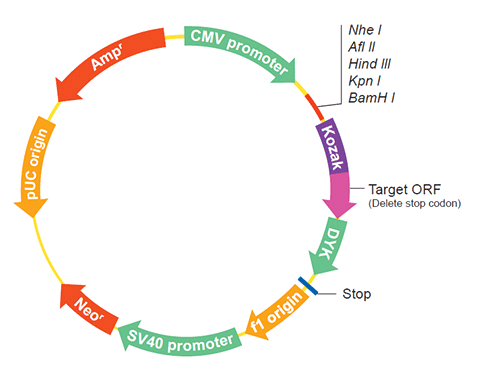 XM_014117791.1
XM_014117791.1
ORF Insert Sequence:
1
61
121
181
241
301
361
421ATGGAGCCCT TCGCCGACTG GCTGGCCTCG GCGGCAGCCC GGGGCCGCGC GGACGAGGTG
CGGGCGCTGC TCGCGGCGGG GGCGCCTCCC GACGCGCCGA ACCGCCTGGG TCGGAGCCCG
ATTCAGGTCA TGATGATGGG CAGCACCCGC GTGGCCCAGC TGCTGCTGCT CCACGGCGCC
AACCCCAACT GTGCCGACCC CGTCACCCTC ACCCGCCCTG TGCACGACGC GGCCCGGGAG
GGCTTCCTGG ACACGCTGGT GGTGCTGCAC CGAGCCGGGG CGCGGCTGGA CGTGCGCGAT
GCCTGGGGCC GCCTGCCCGT GGACCTGGCT GAGGAGCGGG GCCACGGCGC TGTCGCTGCG
TACCTGCGCG CAGCCGCGGG GGGCACCGAA AGTGGTAGCC ACGCCCGTAC GGAAGGTGCG
GAAGGTCACG CAGACAGCCC GGACTTCAAG AATTGAThe stop codons will be deleted if pcDNA3.1+/C-(K)DYK vector is selected.
-
PubMed
The MTAP-CDKN2A locus confers susceptibility to a naturally occurring canine cancer.
Cancer epidemiology, biomarkers & prevention : a publication of the American Association for Cancer Research, cosponsored by the American Society of Preventive Oncology21(7)1019-27(2012 Jul)
Shearin AL,Hedan B,Cadieu E,Erich SA,Schmidt EV,Faden DL,Cullen J,Abadie J,Kwon EM,Gröne A,Devauchelle P,Rimbault M,Karyadi DM,Lynch M,Galibert F,Breen M,Rutteman GR,André C,Parker HG,Ostrander EA
-
-
Most Popular Services
-
Services & Products
-
News & Blogs
- Unlocking the Potential of Cytokines for Cancer Immunotherapy
- CRISPR/Cas13: Evolving Biomedical Applications
- The skin remembers injuries from sticks and stones, can heal recurring wounds faster
- Evidence for Enduring Neurogenesis in Adult Brains
- Scientists’ approach to saving the “Chocolate Trees” from extinction
- Why is Yeast Important for Recombinant Protein Expression
- CRISPR/Cas9 Editing: T Cell Engineering for Immunotherapies
- Top 4 Reasons to Develop Rabbit Antibodies
-
-
-
PubMed
 Hi!Ask me about GenScript services and products! I can answer questions or connect you to a live person.
Hi!Ask me about GenScript services and products! I can answer questions or connect you to a live person. -




